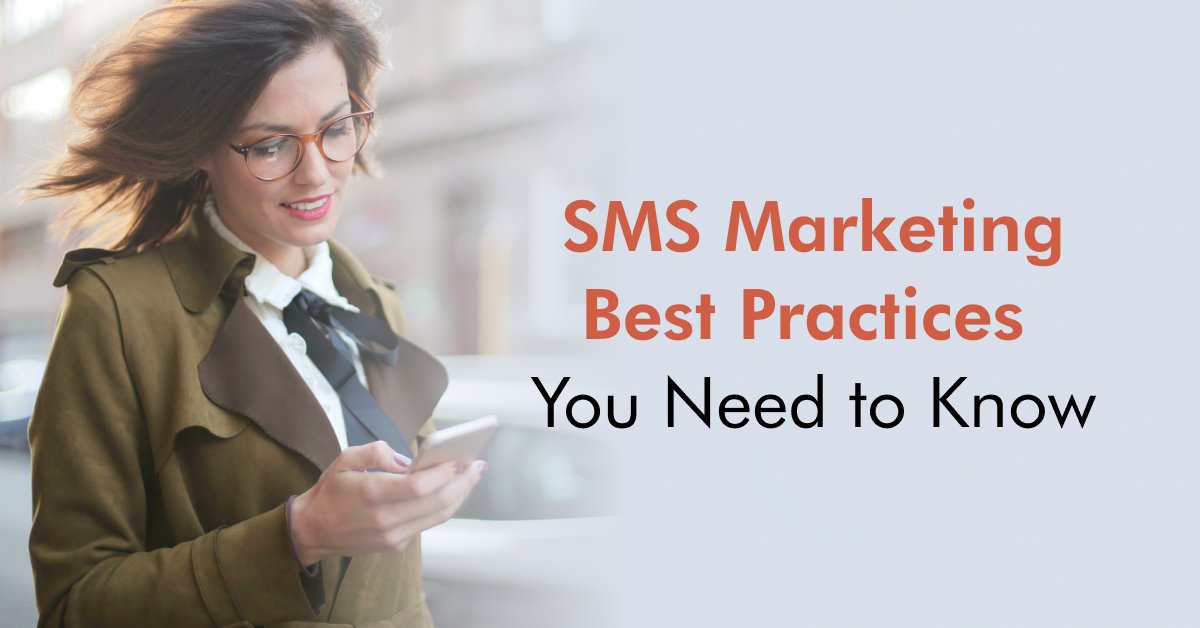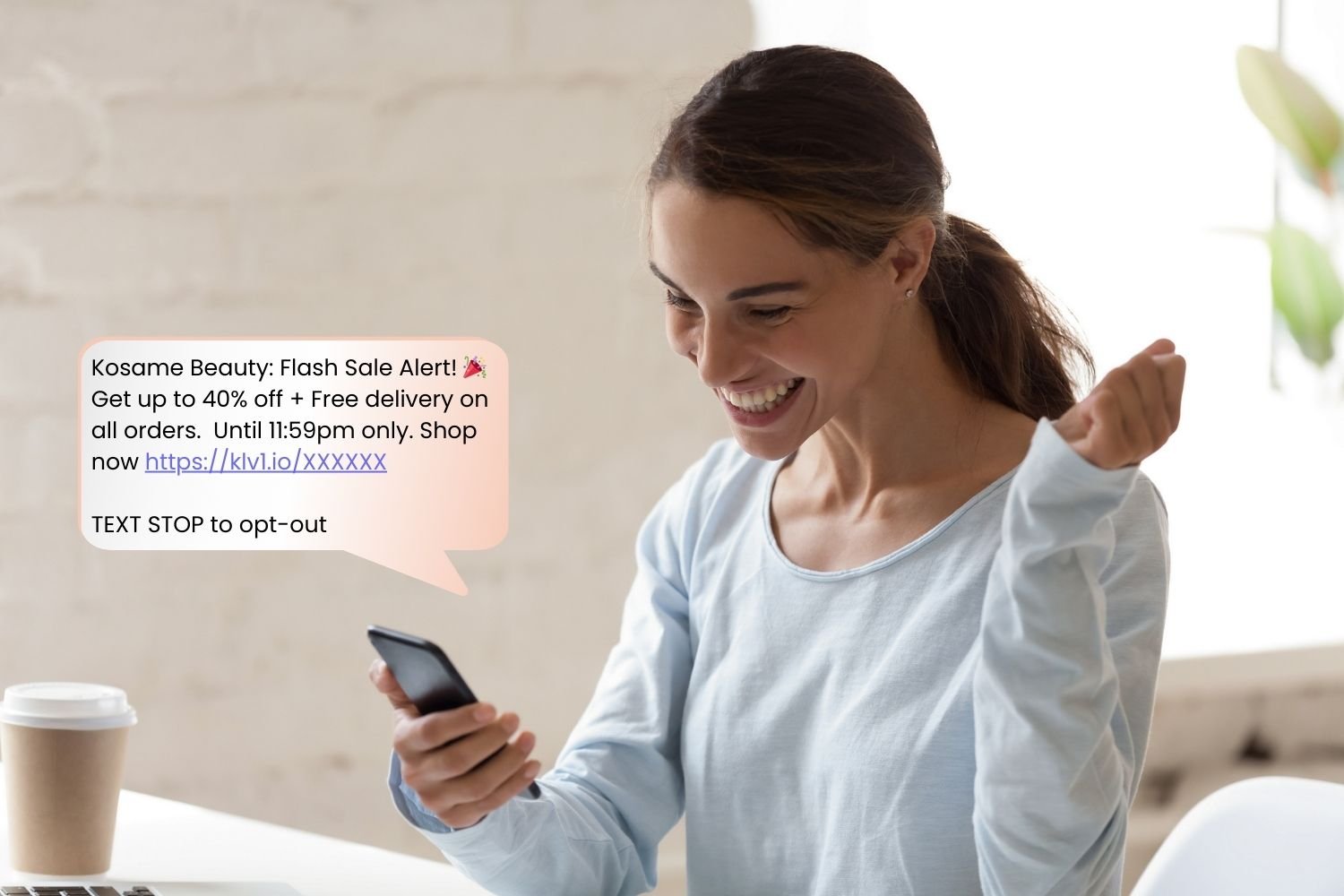SMS Marketing 101: Proven Strategies for Boosting Engagement with SMS
With nearly every text message read within the first three minutes of delivery, SMS offers untapped potential for reaching your customers on a direct and personal level. But the real question is, how can you ensure your messages aren't just opened, but also drive conversions and retain customers?
We get into all of this and more below to bring you a comprehensive guide on the best practices when using SMS marketing. Whether you're new to SMS or looking to refine your existing strategy, in this blog you'll find actionable tips for enhancing your campaigns and supercharging your entire marketing approach.
What is SMS marketing?
SMS or Short Message Service marketing refers to promotional or transactional messages sent for marketing purposes using text. These messages are meant to communicate time-sensitive offers, updates, and alerts in a neat package of just 160 characters to people who have consented to receive them from your business.
According to Klaviyo's SMS consumer sentiment report, 96% of shoppers would be happy to receive a text from their favourite brand at least once a week, that’s twice as many as the number of people who are willing to hear from you on social media.
SMS messages also boast a significantly high open rate, much higher than email (98% compared to a mere 28% in fact). Integrating SMS marketing with email campaigning is a great way to curate a comprehensive omnichannel strategy for your business.
Is it suitable for your business?
Given the impressive open rates and broad reach—over 5 billion people globally can send and receive SMS messages—SMS can be a game-changer for businesses of all sizes. But to truly determine if SMS marketing is suitable for your brand, you need to ask yourself some questions about your target audience: Do they use mobile phones frequently? Are they receptive to receiving notifications that require prompt action? And in terms of the nature of your messages; are they urgent enough to warrant an immediate read?
If your answers are a resounding YES, you can get started with learning some of the foundational best practices to follow when orchestrating an SMS marketing strategy.
SMS Compliance Basics
Understanding and adhering to basic SMS protocol is the first step for success in any marketing plan. Here’s an overview to keep you compliant:
1. Collecting Consent
Always obtain explicit consent before sending SMS messages. Make it simple for users to opt-out at any time with a simple text response. Compliance varies by country, so it's important to familiarise yourself with your local laws. Learn more about this here.
2. Keep it Short and Direct
You only have 160 characters to get your point across; make them count. Avoid emojis, special characters, and abbreviations or “text-speak”. Such inclusions could cost you more if you’re using Klaviyo. If you have the budget, feel free to add emojis to enhance your message, just make sure you know the limitations of your host software and prioritise the essential details like sale discounts, promo validity, and a clear call to action.
3. Timing Your Messages
Respect the typical quiet hours in your recipient’s region. Avoid sending messages before 9 am or after 8 pm and check local regulations. You can also test which times lead to the best open rates with your audience.
4. Brand Your SMS
Identify your brand in each message to avoid being perceived as spam. Effective branding in SMS can include mentioning your company name or integrating your ToV with personalisation.
5. Include Links as CTA
Utilise links effectively as part of your call to action. If using Klaviyo, take advantage of its built-in link shortener to track clicks and conversions. Avoid using third-party link shorteners as they could break your links.
SMS Best Practices to Boost Engagement and Retention
Unlike email, which can house extensive content and visuals, SMS is all about those concise, urgent messages. Treat this as an advantage, not a pitfall. SMS should be used alongside email to enhance your campaigns and flows, not to replace or mirror them.
We know a thing or two about blending SMS and email. Master these best practices, and you’ll be on the fast track to success:
Utilising SMS for Time-Sensitive Content
SMS should be reserved for messages that require immediate attention. This could include:
Flash sales and promotions with a short duration
Important updates or reminders that are time-sensitive
Alerts that require quick action from the recipient
When you focus on the urgency and timeliness of content, SMS can complement broader marketing strategies that include email.
Example:
24-Hour Flash Sale! Get 50% off everything! Hurry, ends tomorrow at noon! Shop now: [Link]
Reminder: Your appointment with [Company Name] is tomorrow at 3 PM. Reply YES to confirm or NO to reschedule.
Integrating SMS with Email Marketing
To leverage the synergy between SMS and email, consider various methods to grow your subscriber list:
Encourage SMS sign-ups through website pop-ups.
Offer SMS opt-ins during events or purchases.
Include SMS opt-in options in email subscription forms.
Leverage social media with SMS subscribe links and tap-to-text stickers on Instagram stories to increase sign-ups.
Maintaining Value in Every Message
Each SMS you send should deliver value while adhering to its limitations:
Stick to the essential details within the 160-character limit.
Always include a clear and concise call to action.
Regularly conduct A/B testing to refine message effectiveness.
Use different codes for SMS and email for tracking purposes.
Example:
Ends Tonight! Save 30% on all tops at [Brand Name]. Use code TOP30 at checkout. Shop now: [Link]
Personalisation and Segmentation
SMS stands as an incredibly personal marketing avenue, demanding the utmost care in every brand-subscriber interaction. By meticulously tracking your shoppers' purchase intent and shopping history, you gain deep insights into their buying patterns, brand affinity, and taste preferences. This knowledge empowers you to craft tailored shopping experiences that resonate with each customer.
Base your message on the recipient’s past purchase behaviour or interaction history.
For example, if you’re launching a new dress collection, anyone who has purchased or browsed your dress category should receive a text message about the launch based on their previous interest. Better yet, give them exclusive first access to shop before anyone else. In another instance, you can incentivise your highly engaged SMS subscribers who have spent twice as much as your AOV (average order value) by giving them exclusive offers when they purchase again within a certain period. Or, if your SMS subscribers have previously contacted customer service, you could send them a personalised message thanking them for their business with a discount code to encourage conversion.
Send special offers to your loyal customers or VIP segment.
Ensure messages are relevant to each specific group.
Try personalising messages with first names or through birthday texts.
Example:
Hi [Name], we noticed you love our eco-friendly products! Enjoy 20% off our new sustainable line with code ECO20. Shop now: [Link]
Happy Birthday [Name]! As our treat, enjoy 15% off sitewide for the rest of the day. Use this link to shop: [Link]
Consistency in Your SMS Strategy
Developing a consistent rhythm for your SMS campaigns is crucial. This involves:
Determining the frequency of messages
Ensuring content quality remains high
Keeping messaging aligned with brand voice and customer expectations
Consistency helps nurture trust and familiarity among your subscribers, essentially leading to longer-term engagement.
Tracking and Optimising Performance
Monitor the effectiveness of your SMS campaigns through:
Engagement metrics like open and click-through rates
Conversion rates and ROI from SMS-driven promotions
Customer feedback on the relevance and frequency of your messages
Use these insights to continually refine and optimise your SMS strategy. If something isn’t working, switch things up. Likewise, if personalisation or discount codes are driving more conversions, you’re going to want to keep them around.
Final Thoughts
There you have it: texting your way into customers' hearts might just be easier than you think. SMS isn't just about firing off messages into the ether and hoping for the best. You want to craft those little nuggets of information that pack a punch, deliver value, and maybe just make someone’s day a bit better.
Keep it short, relevant, and, above all, authentic. If you need help sharpening your SMS approach, don’t hesitate to get in touch with our team to discuss where we could take your SMS marketing strategy together.





